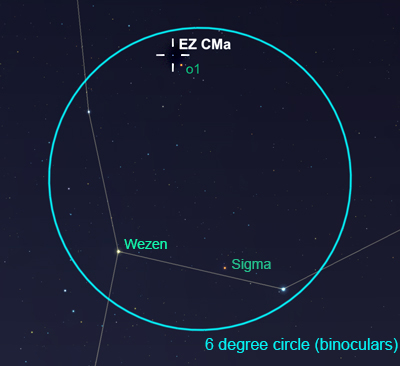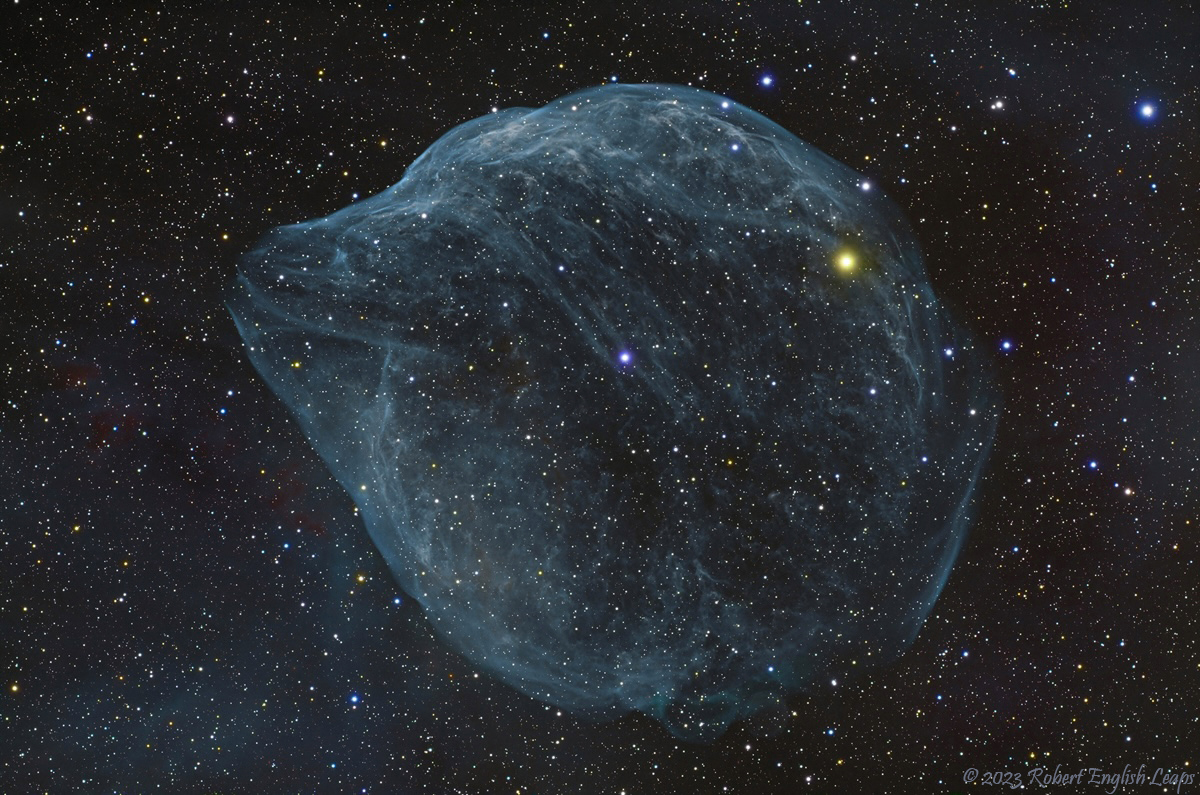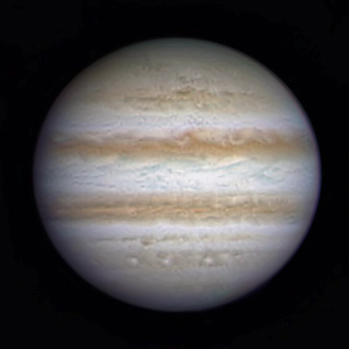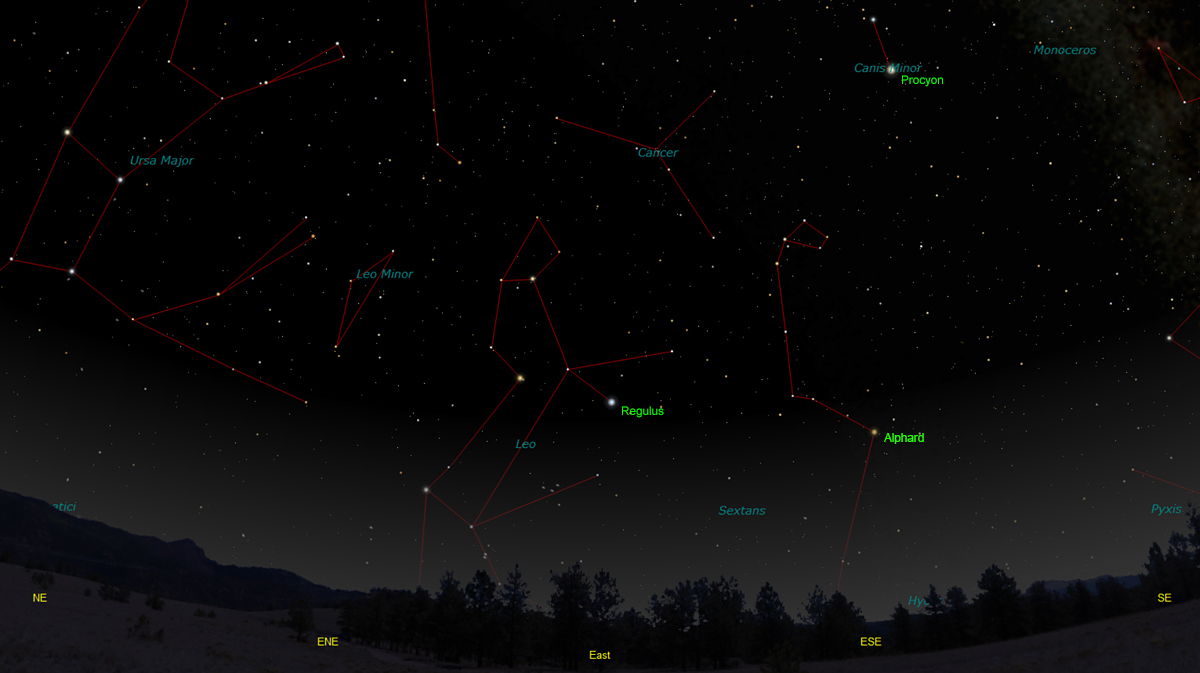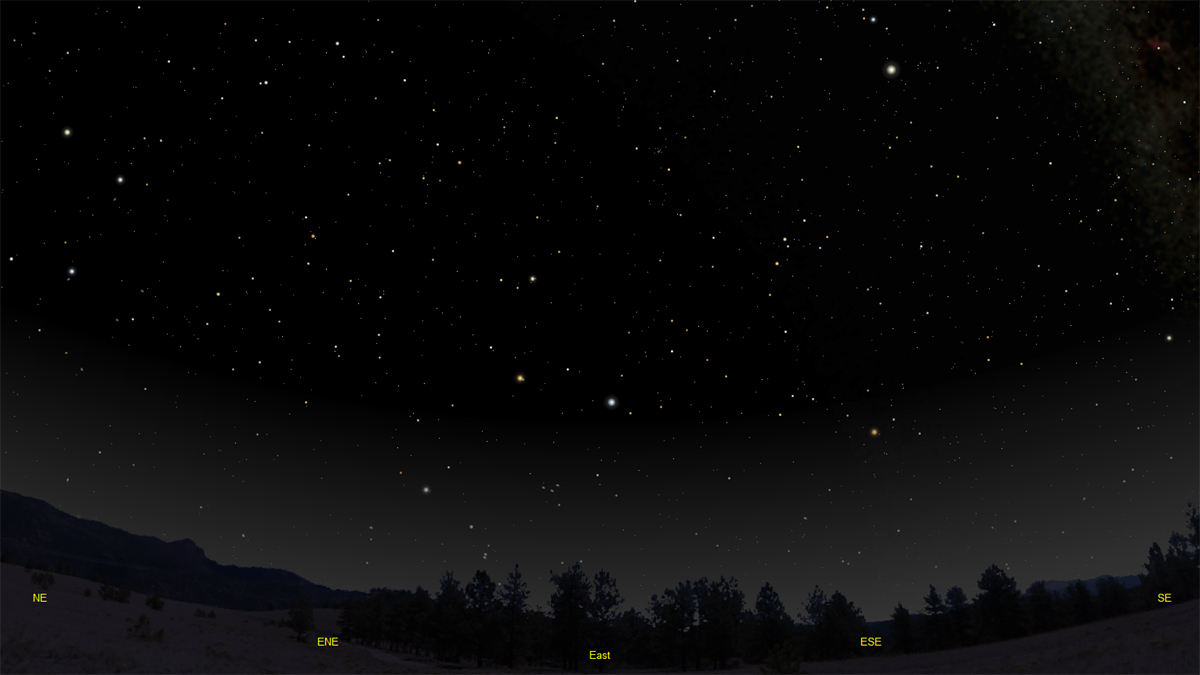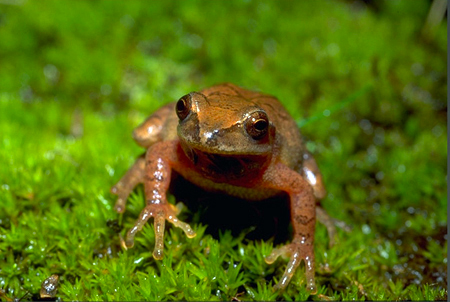The purpose of this feature is to give scout leaders, educators and naturalists an idea of some of the natural events coming up each month. We will try to cover a variety of natural events ranging from sky events to calling periods of amphibians, bird and mammal watching tips, prominent wildflowers and anything else that comes to mind. We will also note prominent constellations appearing over the eastern horizon at mid-evening each month for our area for those who would like to learn the constellations. If you have suggestions for other types of natural information you would like to see added to this calendar, let us know! Though we link book references to nationwide sources, we encourage you to support your local book store whenever possible.
Notes From December 2023
On December 7th, after a cold front had swept through, I had an unusually clear winter sky. It was one of those nights where it seemed like an extra layer of stars had been added and it was just stunning! It was predicted to be quite cold, but I couldn't resist trying for The Dolphin Head Nebula, an unusual bubble nebula in Canis Major. It wasn't a particularly easy target since it never climbs more than 30 degrees above the southern horizon. That meant that I would be imaging through twice the air mass that I typically do. Sirius put on a colorful light show as it rose through the turbulent layers of the atmosphere close to the horizon, showing all of the colors of the rainbow. The cold temperatures and wind created a silence in the winter woods surrounding the observatory. Only the sound of a distant freight train making its way down Chattanooga Valley far below broke the silence. Early in the evening the telescope tube had already started to frost over. The dew heaters managed to keep the optics clear of frost. A persistent wind made it feel colder. The camera loves cold temperatures and I was able to cool the camera sensor to -30 degrees Centigrade, which greatly reduces noise in the images. To find the location of the nebula, begin at Sirius and work your way down the stars of Canis Major toward the southern horizon. Sirius is the brightest star in the night sky. Though it's larger and brighter than our Sun, its brilliance is mainly due to its close proximity. It's only about 8.7 light-years distant, and the fifth closest star system to our Sun. All of the other stars of Canis Major shown in the charts above are much farther away. The close up of Canis Major shows a typical field of view for many common binoculars and is six degrees in diameter. If you aim your binoculars at the position shown in the diagram, you will see two faint orange stars. They are Omicron 1 (o1) and Sigma Canis Majoris. The upper star, Omicron, is the brightest star in the image of the Dolphin Head Nebula below. On a clear night you should be able to see o1 with your naked eye. The orange color will be distinct in binoculars. The star marked EZ Canis Majoris is the central star of the nebula. It's a little too faint to see with the naked eye, but it's not hard to see in binoculars. Both stars are visible in the image below, though the image has been rotated 90 degrees from the finder chart. The nebula itself is quite faint. I found a record of the brighter parts of it being observed with a 10" aperture telescope with an Oxygen III filter. Can a nebula be playful? If so, the Dolphin Head Nebula probably qualifies, although I think a better name would just be the Dolphin Nebula. To me the nebula looks like a complete celestial dolphin swimming towards the viewer.
The nebula is cataloged as Sh2-308. The bluish star you see at the center of the nebula, EZ Canis Majoris, is a Wolf-Rayet star. Wolf-Rayet stars are among the most luminous, most massive, and most briefly detectable stars known. The nebula surrounding this star looks like a planetary nebula, but planetary nebulae are created by aging red giant stars. The central star of the Dolphin Head Nebula will at some point become a supernova. Moreover, since its mass is over twenty times the mass of our Sun, it will probably wind up as a black hole. It is one of the 10 brightest Wolf-Rayet stars known. The bluish wisps of nebulosity in the image are primarily ionized oxygen that has been cast off of the central star. The diffuse red areas are ionized hydrogen. The nebula is quite faint, but if you could increase its brightness to where it was visible to the naked eye it would appear larger than a full Moon in the sky. The diameter of the nebula at its widest point is about 60 light-years. Current distance estimates for the central star and nebula are around 4,900 light-years, though some estimates are as low 1,900 light-years.
*For those who haven't read Douglas Adam's A Hitchhiker's Guide to the Galaxy, the book begins as Earth is about to be destroyed to make way for a hyperspace expressway for more advanced civilizations. The dolphins have already arranged to leave the Earth. According to Adams; "The dolphins had long known of the impending demolition of Earth and had made many attempts to alert mankind to the danger...The last ever dolphins message was misinterpreted as a surprisingly sophisticated attempt to do a double backward somersault through a hoop whilst whistling 'The Star-Spangled Banner', but in fact the message was this: 'So Long, and Thanks for All the Fish.'"
. Sky Events for January 2024: The Quadrantid Meteor Shower reaches its brief peak in the early morning hours of January 4th. The peak only lasts around six hours, centered around 4:00am EST. Face northeast. A reclining lounge chair, warm clothes or a sleeping bag and perhaps a warm beverage will make things a lot more comfortable. Earth reaches perihelion, its closest approach to the Sun for the year, at 7:39pm EST on January 2nd.
Jupiter is in Aries this month. Look for it at dusk in the southeast, about 60 degrees above the horizon. It will be the brightest star-like object in the sky in the early evening. Over two-thirds of the combined mass of all of the solar system's planets is in your field of view when you aim your telescope at Jupiter. There's a lot to see on Jupiter. Even with just a good pair of binoculars you can see Jupiter appears as a small disk rather than a point like a star. You can often see one or more of the four Galilean moons. A six-inch aperture telescope will show the Great Red Spot, a long-lasting storm in Jupiter's clouds shown in the image at right, and some of the belts, though those are of lower contrast visually than they appear in images. The planet rotates in just under 10 hours, so in a single night you can watch the Great Red Spot rotate from one side of the planet to the other. Saturn is in Aquarius this month, and is only about 30 degrees above the southwest horizon at dusk at the beginning of the month. You will want to observe it as soon as possible after sunset. It will gradually sink into the twilight glow by the end of the month.
Morning Sky: Venus still shines brightly low in the southeastern predawn sky this month. It is brighter than any other star-like object in the pre-dawn sky, so you shouldn't have a problem locating it. From January 1st through the 9th, look to the southeast to spot Venus, Mercury, and if you have clear skies and a flat southeastern horizon, Mars. A crescent Moon joins the assembly by the 6th. Try to get to your spot about 40 minutes before local sunrise and keep looking at least till 20 minutes before sunrise. Binoculars can be a tremendous help. More here.
Constellations:
The views below show the sky looking east at 10:00pm EST on January 15th. The first view shows the sky with the constellations outlined and names depicted. Star and planet names are in green. Constellation names are in blue. The second view shows the same scene without labels. Ursa Major, the Great Bear, has now cleared the horizon in the northeast. In the nose of the bear the bright galaxies Messier 81 and Messier 82 are visible as small faint glows in binoculars. The bright stars of Leo the Lion are visible now. Hydra, the Water Serpent, rears its head menacingly. Hydra's brightest star Alphard is known as "The Solitary One" because of its somewhat isolated location from other bright stars. Canes Venatici, the Hunting Dogs, make their appearance just above the northeast horizon. Among the fainter constellations in the east are Leo Minor, the small Lion, Cancer, the Crab, and Sextans, the Sextant. Cetus the Sea Monster is due south in the early evening, and it brings with it the barred spiral galaxy NGC 1073. With the camera rotation angle I used to image the galaxy, it had the appearance to me of an eye with a vertical pupil. Perhaps the eye of the sea monster? Three of the star-like objects below the galaxy are in fact very distant quasars, one of which is over 10 billion light-years distant. For more on the galaxy and the surrounding quasars, click here. On Learning the Constellations: We advise learning a few constellations each month, and then following them through the seasons. Once you associate a particular constellation coming over the eastern horizon at a certain time of year, you may start thinking about it like an old friend, looking forward to its arrival each season. The stars in the evening scene above, for instance, will always be in the same place relative to the horizon at the same time and date each January. In particular, learn the brightest stars (like Regulus and Procyon in the above scene), for they will guide you to the fainter stars. Once you can locate the more prominent constellations, you can "branch out" to other constellations around them. It may take you a little while to get a sense of scale, to translate what you see on the computer screen or what you see on the page of a book to what you see in the sky. Look for patterns, like the stars of Leo. The earth's rotation causes the constellations to appear to move across the sky just as the sun and the moon appear to do. If you go outside earlier than the time shown on the charts, the constellations will be lower to the eastern horizon. If you observe later, they will have climbed higher. As each season progresses, the earth's motion around the sun causes the constellations to appear a little farther towards the west each night for any given time of night. If you want to see where the constellations in the above figures will be on February 15th at 10:00pm EST, you can stay up till 12:00am EST on the January 15th and get a preview. The westward motion of the constellations is equivalent to two hours per month. Recommended: Sky 5& Telescope's Pocket Star Atlas is beautiful, compact star atlas. A good book to learn the constellations is Patterns in the Sky, by Hewitt-White. For sky watching tips, an inexpensive good guide is Secrets of Stargazing, by Becky Ramotowski.
A good general reference book on astronomy is the Peterson
Field Guide,
A Field Guide to the Stars and Planets, by Pasachoff. The book retails for around $14.00.
The Virtual Moon Atlas is a terrific way to learn the surface features of the Moon. And it's free software. You can download the Virtual Moon Atlas here. Apps: The Sky Safari 6 basic version is free and a great aid for the beginning stargazer. I really love the Sky Safari 6 Pro. Both are available for iOS and Android operating systems. There are three versions. The Pro is simply the best astronomy app I've ever seen. The description of the Pro version reads, "includes over 100 million stars, 3 million galaxies down to 18th magnitude, and 750,000 solar system objects; including every comet and asteroid ever discovered." You may also want to try the very beautiful app Sky Guide. Though not as data intensive as Sky Safari, Sky Guide goes all out to show the sheer beauty of the night sky. Great for locating the planets. A nother great app is the Photographer's Ephemeris. Great for finding sunrise, moonrise, sunset and moonset times and the precise place on the horizon that the event will occur. Invaluable not only for planning photographs, but also nice to plan an outing to watch the full moon rise. Available for both androids and iOS operating systems.
Amphibians:
This is also the time to look for Tiger Salamander and Streamside Salamander egg masses. Tiger Salamanders like to deposit their egg masses on the vegetation in shallow water in small ponds and wetlands. Streamside Salamanders deposit their egg masses on the bottoms of rocks in streams. If you are looking for salamanders, always remember to carefully replace any stones you pick up exactly where you found them. Recommended: The Frogs and Toads of North America, Lang Elliott, Houghton Mifflin Co.
Archives (Remember to use the back button on your browser, NOT the back button on the web page!) Natural Calendar December 2023 Natural Calendar November 2023 Natural Calendar September 2023 Natural Calendar February 2023 Natural Calendar September 2022 Natural Calendar February 2022 Natural Calendar December 2021 Natural Calendar November 2021 Natural Calendar September 2021 Natural Calendar February 2021 Natural Calendar December 2020 Natural Calendar November 2020 Natural Calendar September 2020 Natural Calendar February 2020 Natural Calendar December 2019 Natural Calendar November 2019 Natural Calendar September 2019 Natural Calendar February 2019 Natural Calendar December 2018
Natural Calendar February 2018 Natural Calendar December 2017 Natural Calendar November 2017 Natural Calendar October 2017Natural Calendar September 2017 Natural Calendar February 2017 Natural Calendar December 2016 Natural Calendar November 2016 Natural Calendar September 2016Natural Calendar February 2016 Natural Calendar December 2015 Natural Calendar November 2015 Natural Calendar September 2015 Natural Calendar November 2014 Natural Calendar September 2014 Natural Calendar September 2013 Natural Calendar December 2012 Natural Calendar November 2012 Natural Calendar September 2012 Natural Calendar February 2012 Natural Calendar December 2011 Natural Calendar November 2011 Natural Calendar September 2011 Natural Calendar December 2010 Natural Calendar November 2010 Natural Calendar September 2010 Natural Calendar February 2010 Natural Calendar December 2009 Natural Calendar November 2009 Natural Calendar September 2009 Natural Calendar February 2009 Natural Calendar December 2008 Natural Calendar November 2008 Natural Calendar September 2008 Natural Calendar February 2008 Natural Calendar December 2007 Natural Calendar November 2007 Natural Calendar September 2007 Natural Calendar February 2007 Natural Calendar December 2006 Natural Calendar November 2006 Natural Calendar September 2006 Natural Calendar February 2006
Natural Calendar December 2005
Natural Calendar November 2005
Natural Calendar September 2005
Natural Calendar February 2005
Natural Calendar December 2004
Natural Calendar November 2004
Natural Calendar September 2004
Natural Calendar February 2004
Natural Calendar December 2003
Natural Calendar November 2003 Natural Calendar February 2003 Natural Calendar December 2002 Natural Calendar November 2002 Nature Notes Archives: Nature Notes was a page we published in 2001 and 2002 containing our observations about everything from the northern lights display of November 2001 to frog and salamander egg masses. Night scenes prepared with The Sky Professional from Software Bisque All images and recordings © 2023 Leaps
|
|

